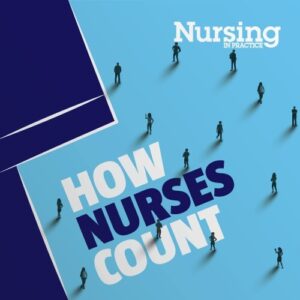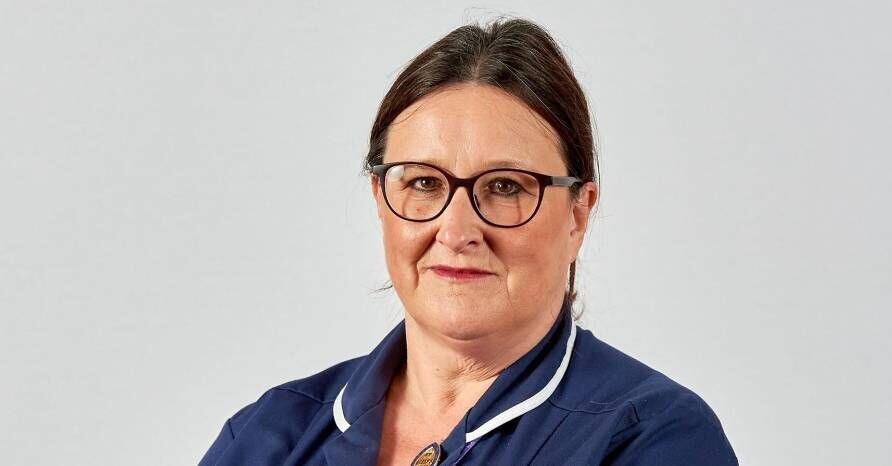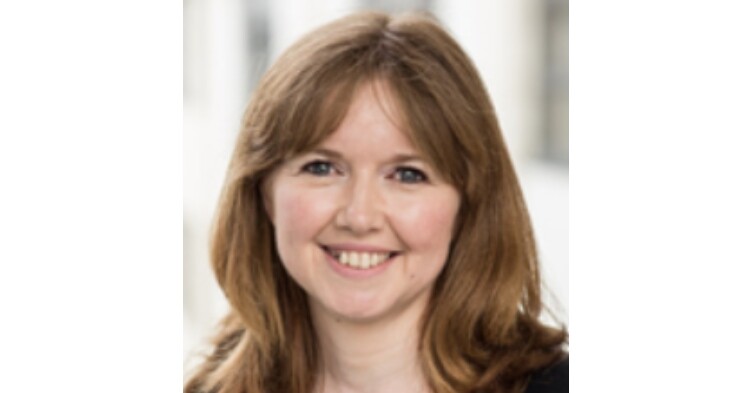Chronic disease management: ‘Patients don’t necessarily ever need to go and see a GP’

 Jennie Morrison speaks to Carolyn Scott about the central role of the general practice nurse in long-term conditions. The workload is shared between the different members of the nursing team, in a practice that has a strong focus on training. This article is part of the How Nurses Count series.
Jennie Morrison speaks to Carolyn Scott about the central role of the general practice nurse in long-term conditions. The workload is shared between the different members of the nursing team, in a practice that has a strong focus on training. This article is part of the How Nurses Count series.
At a busy general practice in Surrey the nursing team takes a central role in chronic disease management.
Jennie Morrison, general practice nurse and non-medical prescriber at Benhill and Belmont GP Centre in Sutton, describes how chronic disease management works in her practice. She is also education and training lead at South West London Training Hub.
Exploring the impact of nurses in general practice and their largely autonomous role, patients with long term conditions may not need to see a GP at all on a regular basis, Ms Morrison explains.
The team comprises healthcare assistants, nursing associates, practice nurses, and Ms Morrison is a general practice nurse with extended scope as an independent prescriber.
‘We focus on those really complex patients which we have in general practice that the GPs wouldn’t have time to see. So it just makes better use of everybody’s time.
She describes the practice’s process for the management of a patient with diabetes.
‘If we were to look at a patient with diabetes, for example, our healthcare assistant or nursing associate would do the bloods and the physical assessment of their health. We’ve upskilled our healthcare assistants and our nursing associate to be able to do the foot checks, but also to do blood pressure management and to have that discussion with them around their blood pressure and lifestyle management.
‘Then once the blood tests are back, they will come and see either myself or my colleague and we will go through all of the bloods. We’ve both had extended theoretical training in looking at blood tests and evaluating those.’
She and a colleague will manage the patient’s medication, who are then followed up to check how they are getting on with the change in their regime. All of this happens without the need for a consultation with a GP.
Related Article: Interview: New QICN chief on priorities, challenges and the 10-year plan
‘If something needs to be changed with their medication: either needs to be titrated or something needs to be added in, and they see my colleague, then we would have a discussion and then I would prescribe the medication for that patient.
‘So really, for the diabetic patients, and similarly for the COPD and asthma patients, they don’t necessarily ever need to go and see a GP.
‘This is fantastic for the patient, because they have got continuity of care.
‘They have a lot more time with us as well. While they would see the doctor for 10 minutes, we have a 30-minute appointment with them. It means that we can really reinforce those lifestyle changes that perhaps need to be made.’
Ms Morrison’s extended role includes assessment of blood test results.
‘We can talk to them about their blood test results in a lot more detail, and I like to show them the graphs from EMIS so that they can see the trends. Sometimes that visual understanding of what’s happening with, say, their blood sugar or their cholesterol, is really helpful for them.
‘Then we can start their medication, and we make sure that we don’t just start that and not see them until three months later. We will give them a call, maybe in a few weeks, to make sure that their medications are being tolerated; that they are reminded of how to take them. If there are any issues or problems then we pick up on it at that point, rather than when they come back to see us in three months’ time.’
Communication with patients with long term conditions seen by the nursing team has been helped by using a text-based system to remind them about appointments and follow-up.
‘We were previously losing a lot of patients due to forgetting to come back for their blood test. And with the volume of patients that we have, for us to remind them constantly was becoming really difficult. So we’ve now using Accurx, which is a text-based system.
‘We will set up a text for the patient to say, “We’ve made these changes to your medications today, we would like to see you in three months’ time”, and that triggers a reminder for them in 12 weeks to say: “Please come back for your blood test”.
‘Our uptake of patients coming back to see us at the appropriate time has definitely increased.’
The practice has a strong focus on training, Ms Morrison says, with updates around long term conditions also involving the practice’s GP trainees.
‘The nursing team has been very much upskilled with regards to chronic disease management.
‘I will also deliver tutorials to the GP trainees around chronic disease management, rather than the GPs doing that, and they will often come and sit in with us as well, so that they can see how we run our clinics and appointments.’
With workload high, Ms Morrison thinks that more nurses are needed in general practice, and has a personal vision for how the practice team might develop in the future.
‘I’ve said this for a couple of years now, but my theory is that we’re going to end up in a triangle when it comes to care. At the tip of the triangle, you might just need a couple of doctors. Then you’ll have advanced paramedics, advanced nurse practitioners and pharmacists – seeing day-to-day, coughs, colds, chest infections, etc.
Related Article: What we know so far about the government’s nurse ‘Graduate Guarantee’
‘Then you’ll have practice nurses – where you need a lot more of them – managing all the chronic diseases. And you’ll have nursing associates and healthcare assistants and more junior practice nurses delivering all those core skills, like phlebotomy, smear tests, childhood immunisations, travel health and wound care.’
She says she can see a natural progression in the multidisciplinary mix of roles that are now involved in delivering care in general practice.
‘It will be interesting to see if this happens. I think that general practice sees the GPs being the biggest group within general practice, but that we’ll see that change over time. There might even be a realisation that actually you don’t need as many GPs in general practice, and perhaps you need more of the other health professionals, and a lot more nurses.
‘We don’t necessarily, in our practice, replace every GP that leaves, because there are other people that can absorb some of that work.’
Ms Morrison sees the need for nurses in general practice as only increasing, particularly with a new direction being set by the government’s 10-year health plan.
‘With the 10-year plan moving things out of hospital into the community, we definitely need more students wanting to come and work in general practice.
‘I do put a lot of time and effort when it comes to education and development, because even though that takes time, initially, it’s so time saving when it comes to future patients. What we need to do a lot more of in general practice is not just trying to firefight and get through the day-to-day. We need to think about what we can do now that will impact really positively in the future.’
Having a broad range of roles in the general practice team is very important, she argues.
‘I do think it’s having the good skill mix, and also seeing that the healthcare assistants and nursing associates within the team are incredibly important. I know a lot of practices don’t have healthcare assistants or nursing associates, but I think that now is the time to really consider them as an integral part of the nursing team in general practice.
‘I am very much behind the nurses all the time. So, if there are nurses or healthcare assistants who really want to grow their skills, then I feel as though I’m able to identify those that want to do that.’
‘I think that we are very proactive when it comes to education. We’re a learning environment that takes lots of different types of pre-registration and post-registration students.
Related Article: We must celebrate what’s good about nursing in general practice
‘We certainly value education, and the practice partners and the practice manager are really keen for us to succeed and to be able to take on more roles.’
How Nurses Count!
This article is part of the How Nurses Count campaign, showcasing the impact of nurses in general practice.
 GPN and non-medical prescriber Jennie Morrison says:
GPN and non-medical prescriber Jennie Morrison says:
‘I think that nurses really are the jewel of any practice. Without them, the practice doesn’t really run. There are so many things that practice nurses do behind the scenes, and that make the practice run well, and that other members of the team sometimes don’t know about or realise.’

See how our symptom tool can help you make better sense of patient presentations
Click here to search a symptom





![Menopause: identification and management [NG23]](https://s3-eu-west-2.amazonaws.com/images.nursinginpractice.com/wp-media-folder-nursing-in-practice/wp-content/uploads/2025/03/PULSE-NIP-UPLOAD-BAYER-NICE-MENOPAUSE-A5-HANDBOOK.jpg)
